5 Exasperating Lawn Pests
5 Exasperating Lawn Pests
When thinking about a lawn, either in the front yard or backyard, there are many attributes that come to mind. The grass is a place for laying in the sunlight, playing with your dog, watching your kids run through the sprinklers, and enjoying a light picnic. But another unfortunate factor of grass (and really any plant) is the possibility of a pest infestation. One or two insects is not usually a concern, and their presence is normal when spending extended time outside in nice weather. However, a lawn that is literally crawling with hundreds of tiny insects is not a place that most people would like to hang out. Any insect can make its way to a patch of grass, but there are some species that are problem pests for lawns every year, especially once the weather is consistently warm.
Ants
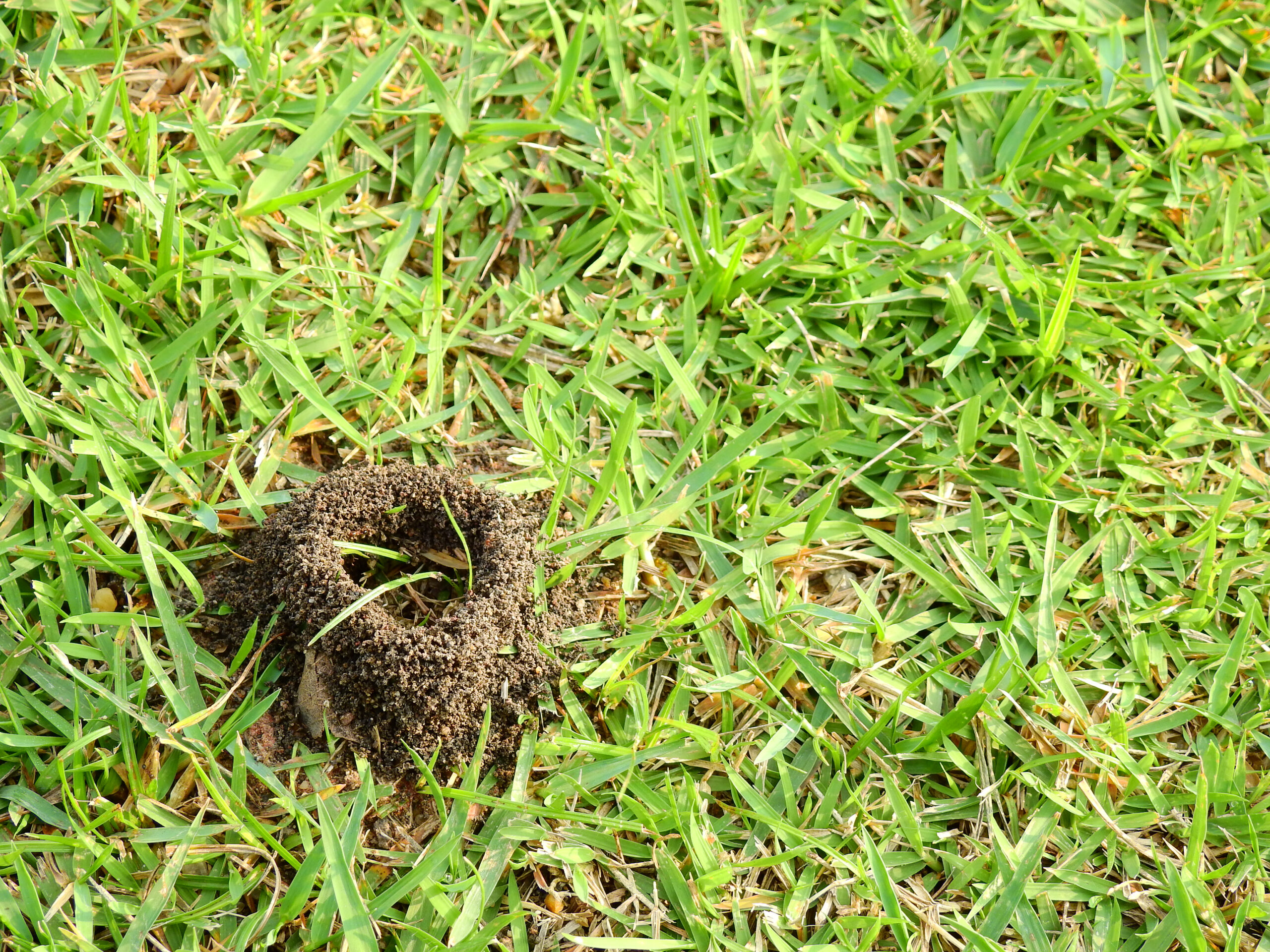
Signs of Infestation: multiple anthills in the lawn, influx of ants indoors, many more ants in the yard than usual
This is the only pest on the list that does not directly damage the lawn, as ants don’t live amidst the grass to eat it. But their anthills are not great for the lawn anyway, so ants are still a nuisance pest even when they’re outdoors. On the surface, anthills just look like dirt mounds with entry holes in the middle. But what we don’t see are the intricate tunnels that go deep underground and house the thousands of ants within the colony. Worker ants that stay within the anthill all day spend their time expanding and tidying the nest, especially in the warmer months when the queen is constantly laying eggs. A few ants in the grass is not the worst thing for the lawn, but a full-scale invasion? That is the worst-case scenario due to the lasting consequences for the grass and the continuous risk of the ants turning to the nearby house for their next target.
When ants invade the lawn, it is initially much worse for the soil than for the grass. As ants tunnel deeper and further into the lawn, the tunnels will gradually dry out the soil. It may seem like the grass is being sufficiently watered as usual, but the carved pathways and countless gaps in the soil prevent it from ever receiving the full water and nutrients it needs. Although small holes can help aerate the soil, they do not justify having an ant colony live underneath the lawn. Plus, the problem is not isolated to the underside of the grass that we don’t see. Anthills are the result of worker ants furiously tunneling into the earth and leaving the excess dirt outside their nest. In the lawn, these mounds can block the grass from receiving the proper amount of sunlight. This may result in yellow patches and dry spots if there are multiple dirt mounds throughout. Certain species can leave larger mounds, such as fire ants. If you start seeing small dirt mounds in your lawn that are not large enough to be from moles or gophers, it could be an ant infestation.
Armyworms
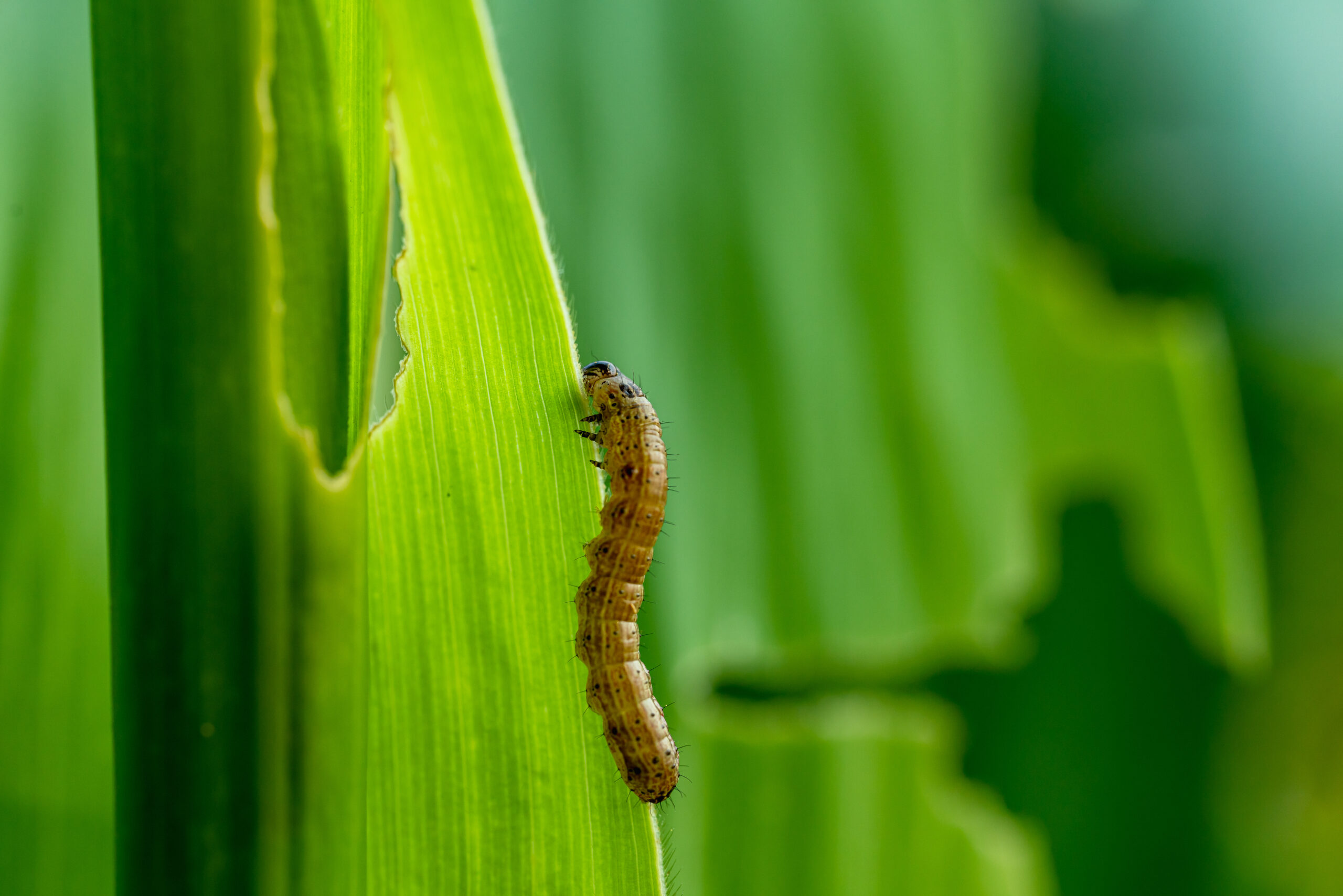
Signs of Infestation: thin tips on the blades of grass, brown spots, bare patches
These worms may just be the larval stage of brown moths, but they do enough damage in this time to warrant a permanent spot on many lists about the worst lawn pests. Armyworms are about 1 to 2 inches long with a subtle brown-and-green-striped pattern. Once the tiny eggs hatch about a week after being placed in the grass by the female moth, the armyworms will feed for the following 3 weeks until they go through metamorphosis to become moths. The larvae eat all parts of the plant tissue, especially from the blades, stems, and leaves. These worms may not seem that bad since there are countless little critters that feed upon the grass. But considering the fact that brown moths can lay 500 eggs at a time, it is safe to say that the subsequent militia of armyworms is a true force to be reckoned with.
Just like their adult forms, armyworms are active at night. They gorge themselves on grass all night, then hide within the lawn during the day to rest and digest. With all of the grass-eating pests around, it can be tricky to determine whether your problem is armyworms or a different critter. The interesting clue that consistently points to armyworms as the source of the problem is how they feed upon the grass. These larvae generally feed in circular patterns, leaving behind bare circles in the lawn. Their damage can be mistaken for drought at first, but the presence of small circles and moth larvae within the grass consistently point to armyworms as the source of the problem.
Billbugs
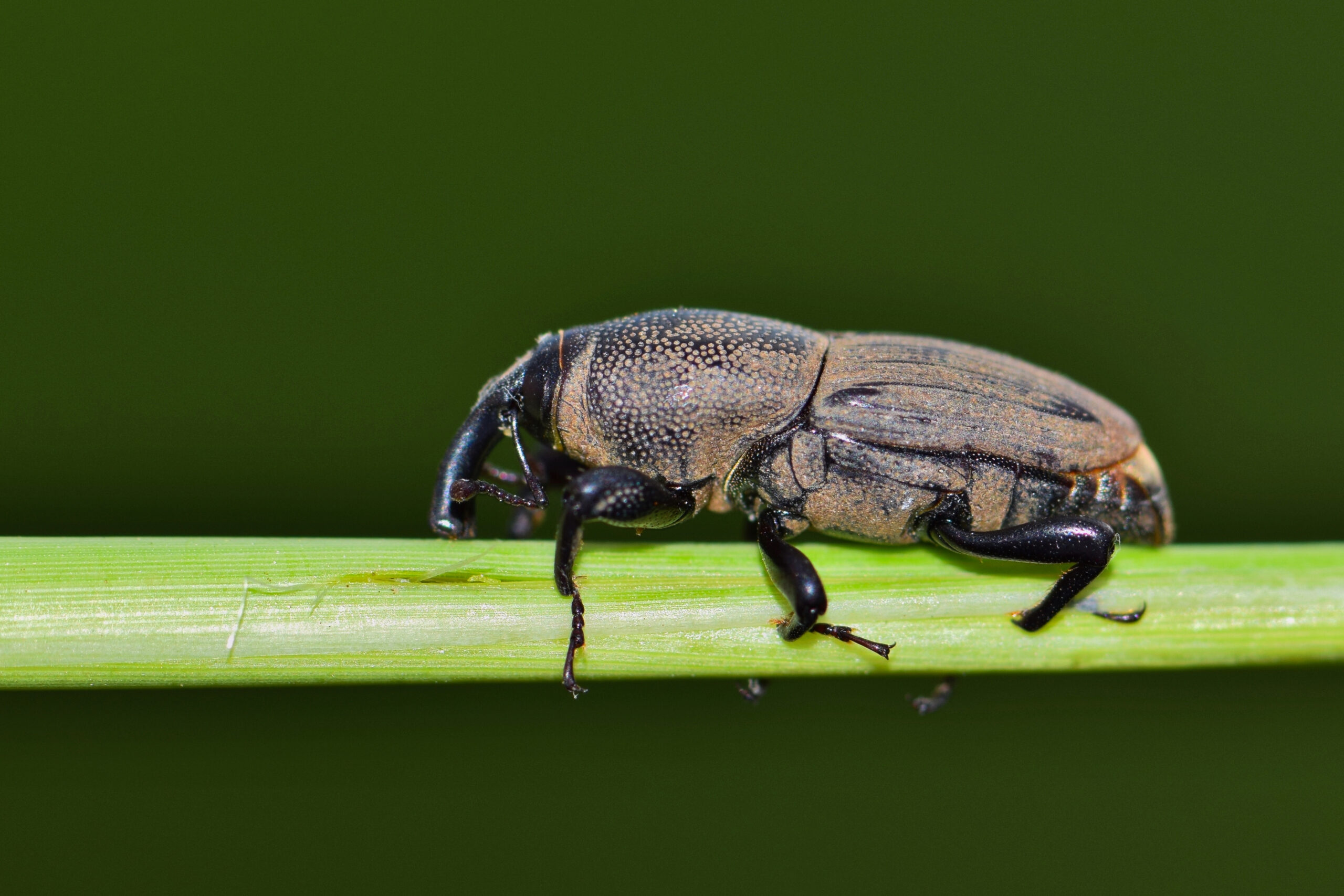
Signs of Infestation: sawdust-like dust in the lawn, brown patches, grass blades easily break off
Once again, the larval stage of this pest is the most destructive against the grass. Billbugs deal the most damage in autumn once the weather starts to cool off. Their larvae are light-colored with dark heads, and they stay near the base of the grass at all times. The adult billbugs create holes in the grass blades in which to lay their eggs, which gives their eventual hatchlings an immediate food source. From the time they hatch, billbugs chew through the grass blades and can sever some of the blades if they stay in one spot for long enough.
As opposed to certain other pests, billbugs damage the lawn in irregular patches. They do not stick with a certain section like armyworms, or just eat certain parts of the grass like cutworms. Since they start feeding as larvae and continue into their adult stage, billbugs can wreak havoc upon a lawn if they are not controlled. The adults are discernible by their strange mouthparts; they have a curved snout that is perfect for munching on grass. They are brown or black in color and about 1/4 of an inch long, so billbugs can easily hide within the grass and avoid detection. In addition to their uneven patches of damage, the effected grass will become brittle and therefore break off easily when touched, revealing the hordes of hungry billbugs within.
Chinch Bugs
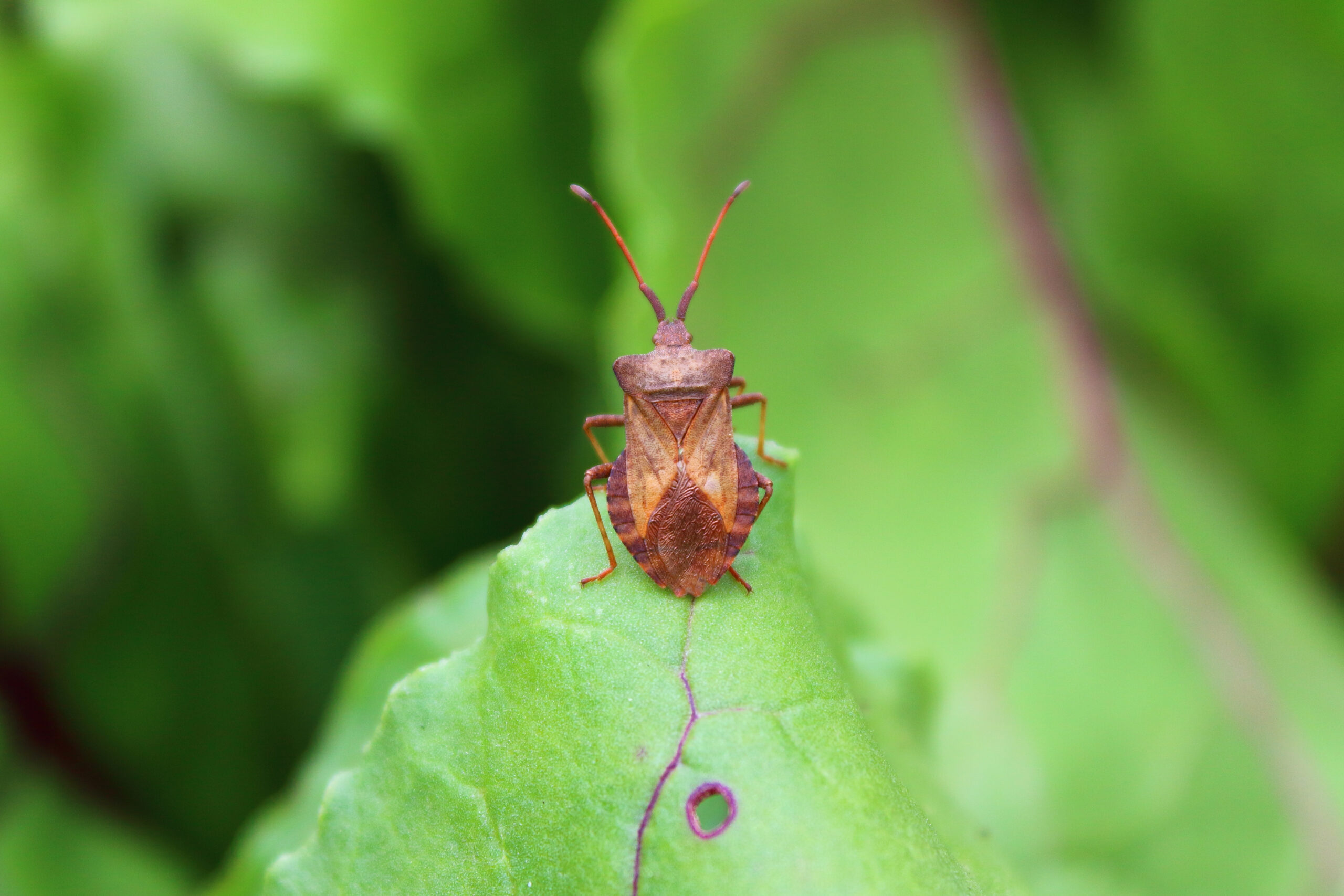
Signs of Infestation: irregular brown patches, wilting grass blades, a purple tint
These pests function much like aphids in that neither one actually bites and chews on the plants they invade. Chinch bugs are sap-suckers that pierce grass blades with their sharp mouthparts before drinking the moisture within. They also secrete a toxic substance in their saliva that prevents the grass in that area from absorbing water. Chinch bugs begin feeding as nymphs and continue throughout the 4 to 6 weeks that it takes for them to mature into their adult forms. There are 2 generations of chinch bugs per year, which is why you may notice a peak in activity at different points in the warmer months.
Chinch bugs are most active in summer, similar to most insects, so their feeding damage coincides with the typical drought damage that lawns experience in the hot weather. The bugs will hide at the base of the grass stems and overwinter until spring, so they have an immediate food source for both the adults and the new eggs once the weather begins to warm up again. The grass will gradually wither once the chinch bugs reproduce and continue feeding on the same patches, so your lawn may not have a chance to thrive in the warm weather if the bugs overwinter within it. The difference between chinch bugs and other grass pests is the recovery time of the lawn; any damaged grass will not return to its normal green hue when watered, so a major chinch bug invasion could deal irreparable damage to a lawn within the course of a summer.
Cutworms
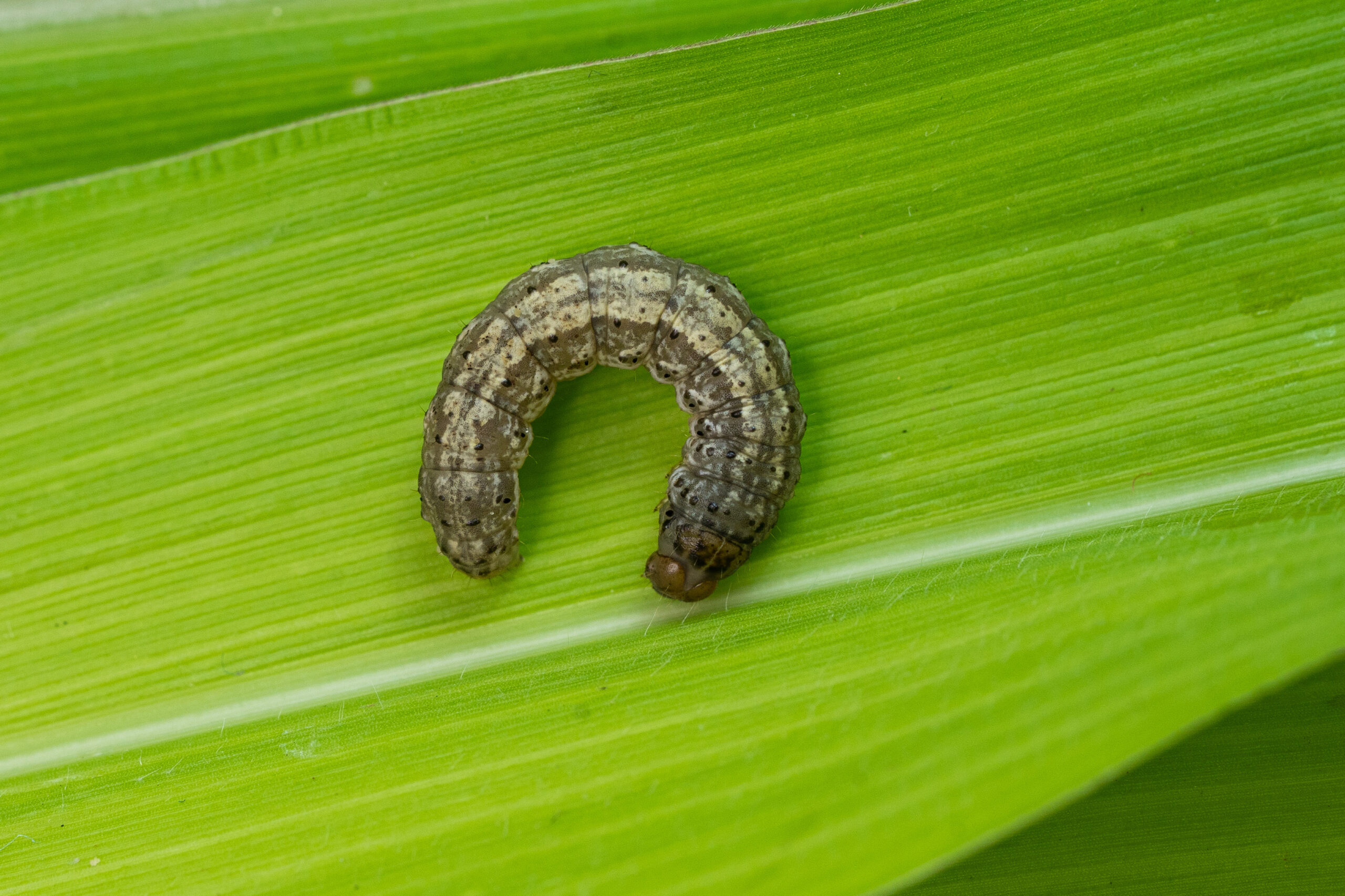
Signs of Infestation: grass blades are cut to the base, wilting grass blades, brown patches
These grayish-green worms are one of the most notorious garden pests because of their nominal tendency to sever any plants they feed upon. Cutworms are the larvae of gray moths and continuously feed for the 2 to 4 weeks that they spend as worms. They are about 2 inches long and are active at night. The female moths place their eggs on the tips of grass blades so that the hatched larvae can inch their way down the blade to the ground, where they will feed at the base of the grass. Cutworms chew through the stems of grass and plants at the base, leaving the toppled greens behind. They can also feed on the tops of grass blades and take them into their burrows to have as a snack later.
Cutworms are a problem year-round, but especially in the spring when all of the foliage is blooming under the warmth of the sun. If the winter is mild enough, there will be more generations of cutworms in the following spring since more of them will have survived while overwintering. They hide in the topsoil during the day and over the winter, so it is possible to remove them from your lawn if you are willing to dig in the soil a bit. For being nocturnal pests, cutworms are strangely drawn to any light during the nighttime, so they are more common near houses with lots of lights on in the evenings. Any grass and plants will suffer at the hands (or mouths) of enough cutworms, but short grass often accumulates the most damage due to its size.
The Grass is Greener with Pointe Pest Control
Proper lawn care is more importance than you may think. A fertilized and well-watered lawn is a happy lawn, and is less likely to suffer from an invasion or stress. If you see any signs of damage slowly spread across your lawn, it is best to take action ASAP. Whether the issue is drought, pests, or lack of fertilization, the grass will recover quicker if it is treated immediately. But if you are looking for an effective solution to a lawn pest issue – or if you want to prevent it from happening – Pointe is here for you! We provide long-term solutions with our efficient treatments, and our experienced technicians do not leave any pest problem unaddressed. Contact us for a free quote on our thorough pest control services that will make your lawn the place for picnics and parties, not pests and problems.
Citations
Ardoin, J. (2022, June 17). Common fall lawn pests: How to identify and eliminate them. Lawn Love. Available at https://lawnlove.com/blog/pest-control-fall-lawn-pests/ (Accessed on April 12, 2023).
Bawden-Davis, J. (n.d.). How to detect and treat common lawn pests. GardenTech. Available at https://www.gardentech.com/blog/pest-id-and-prevention/how-to-detect-and-treat-common-lawn-pests (Accessed on April 12, 2023).
Bennett, P. (2022, April 5). 7 common lawn pests and treatments. Angi. Available at https://www.angi.com/articles/watch-out-these-3-common-lawn-pests.htm (Accessed on April 13, 2023).
Winke, R. (2021, June 2). 10 lawn pests that can cause problems. Family Handyman. Available at https://www.familyhandyman.com/list/problem-lawn-pests/ (Accessed on April 12, 2023).
Request a Free Quote Today
(We do not share your data with anybody, and only use it for its intended purpose)


